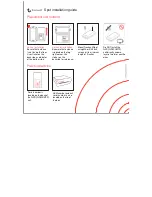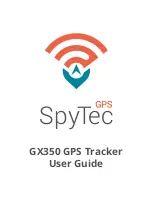
Operations
59
O
p
erat
ion
s
Static Surveying
The static method utilizes long occupation times to solve the carrier phase
ambiguities. During an extended survey period, the satellites being observed will
move across the sky, changing the satellite geometry. This enables the post-
processing software to determine the carrier phase ambiguities and accurately
determine the position of the unknown point. The required occupation time depends
upon the length of the baseline between the two points being observed (the longer the
baseline, the longer the occupation time) and the condition of the atmosphere (namely
the ionosphere) during the data collection period. On average, occupation times will
range from 0.5 hours to 3 hours.
The static method of surveying is the most accurate method due to the large amount
of data collected. The significant disadvantage of the static method is the amount of
time needed to determine an accurate position for the unknown point. This method
can be used with a Z-Surveyor or Z-FX although with its dual-frequency capabilities,
the user will more commonly utilize the rapid static method.
You should use the static method when you require the highest level of accuracy and
reliability. The static method reduces the chances of having to return to the field to re-
observe points, which, after post-processing, do not meet the accuracy expected or
required. The static method is also best for baselines exceeding 15 kilometers. Other
GPS surveying methods used on baselines exceeding these lengths will yield
unpredictable accuracies.
Performing a Static Survey
A static survey uses at least two stationary GPS systems that collect data from several
common satellites over a specific time period. One system is commonly centered over
a known point while the other system(s) occupy unknown stations. In order to
compute accurate baselines and establish accurate positions on the unknown points,
the data collected in the field is post-processed. The following sections describe how
to utilize the static method of GPS surveying to collect data for post-processing.
Measuring Antenna Height
All data collected by GPS systems is referenced to the antenna location, namely the
phase center of the antenna. In most surveying applications, the goal is to position the
survey mark on the ground, not the location of the antenna some distance above the
mark. Therefore, as part of the post-processing procedure, the GPS data collected
must be reduced to ground level where the survey mark is located. This is done by
accurately measuring and recording the distance from the antenna to the survey mark.
This distance is referred to as the antenna height or height of the instrument (HI).
Содержание Z-FX
Страница 4: ...iv Z Surveyor Z FX Operation Manual...
Страница 8: ...viii Z Surveyor Z FX Operation Manual...
Страница 10: ...x Z Surveyor Z FX Operation Manual...
Страница 12: ...xii Z Surveyor Z FX Operation Manual...
Страница 22: ...10 Z Surveyor Z FX Operation Manual...
Страница 56: ...44 Z Surveyor Z FX Operation Manual...
Страница 92: ...80 Z Surveyor Z FX Operation Manual...















































